|
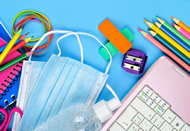
This school
year has been like no other, and it looks like next year will be different in
ways that are hard to imagine. I am an English as second language (ESL) teacher
in a public middle school, Grades 6-8, just outside of Boston, Massachusetts,
USA. This year, the 2019–2020 school year, I have served close to 30 students
from 14 countries that spanned five of the seven continents. Our last day of
face-to-face school was 12 March. Since 13 March—67 school days of distance
learning later—the lines between home and school, teacher and parent, work and
nonwork, and weekday versus school day have become blurred.
Dealing With Changes as
They Come
I went from
teaching English learners (ELs) in multiple classes and grades with various
levels of support, including “push-in” instruction within core academic
classes, to synchronous and asynchronous teaching, where all the ELs I served
were put into just two groups based on English proficiency level. In addition
to this, I held multiple grade level–based homework help sessions, where I
still did core academic class push-in support by attending the students’ class
Zoom meetings “with” them, and checking in with all the families at least once
a week by phone or text.
Since the
transition to online classes, two of my students’ families chose to leave the
United States and return to their home countries right away. We had to arrange
for food to be delivered or picked up for the students who had free and/or
reduced lunch, or for whatever reason needed help with food. We dealt with
internet connectivity access and problems. We delivered laptops across the
district so that students could continue their learning remotely, online.
Within a few short weeks of staying home we had fully transitioned to the
distance learning format.
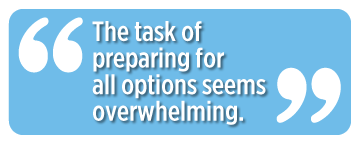
Was it easy? No. Was it perfect? No. Did it work?
Yes, in many respects; the spread of the virus was slowed down in Massachusetts
after we made the transition.
Preparing to Reopen:
Planning for Flexibility
In June,
Massachusetts public school districts were asked by the state’s Department of
Elementary and Secondary Education to prepare for three scenarios for going
back to school in the fall:
-
In-person
school, taking into account health and safety accommodations
(e.g., physical distancing, classroom configurations, and the use of face
covering)
-
A hybrid model of in-person and distance learning
-
Full distance
learning
Add in considerations for
food services provided by the school, as well as the transportation to bring
the students to and from school, and the task of preparing for all options
seems overwhelming. Then add meeting the needs of ELs and of students with
special education plans, and this task seems next to impossible! Districts are
currently sharing their plans and unions are negotiating, and the outcomes are
still unclear. The best laid plans may be scrapped overnight.
Every year
as I plan for the new school year, I always think about how I can better
maximize the learning for the students I serve. We teachers are committed to
our calling and to refining the art of teaching through professional
development and lifelong learning. Despite all our experience and knowledge,
many of us feel greatly challenged by the circumstances we find ourselves in
now. In fact, my teacher friends and I
have been surprised to find that we are having back-to-school dreams and
nightmares prematurely; in my own dreams, I’ve dealt with labyrinths of plastic
tunnels, being separated from students by layers of plastic, and struggling to
interact and hand out materials. My waking anxieties about reopening school are
stealing into my dreams.
In my
classes, I teach language, content, culture, and interpersonal communication
skills. I always need to be mindful of teaching across the four domains
(listening, speaking, reading, and writing). Each year, I carefully choose
short stories, articles, and novels to read, discuss, analyze, and write about
with my students, taking their individual needs into account. Besides teaching
my own English classes, I also foster collaborative relationships with the
classroom teachers with whom I do push-in instructional support in content area
classes.
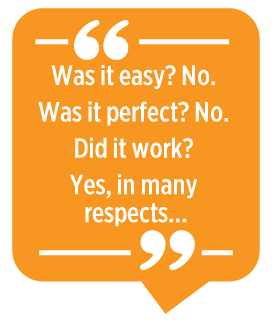 My plans for
Fall 2020 must be especially responsive and flexible because we may have a combination of face-to face learning, hybrid,
and distance learning. I need to demonstrate nimbleness in both my planning and
execution of those plans. And additionally, on top of this, I need to stay
healthy and to keep my students safe, too. No small feat. My plans for
Fall 2020 must be especially responsive and flexible because we may have a combination of face-to face learning, hybrid,
and distance learning. I need to demonstrate nimbleness in both my planning and
execution of those plans. And additionally, on top of this, I need to stay
healthy and to keep my students safe, too. No small feat.
Activities to Start the
School Year Off Right
At the very
start of the school year, as always, I will need to be intentional about
getting to know my new students as we make a concerted effort to build a
learning community. I have decided to start the year off with a couple “getting
to know you” activities in response to COVID-19. Consider planning these
activities with your students:
Making
Masks
Sew masks as
a class. Mask sewing teaches a useful life skill, but also teaches students the
language of making lists and procedural language. The students will also have a
mask for when and if you can meet face-to-face. Teach the students some rules
of thumb for sewing and how to use a pattern. Use language of inquiry and
advocacy as you sew: “How do I make a knot in the thread?” and “Show me what
‘right sides together’ looks like.”
I have
already made kits that include some modeling in the form of a pinned pattern
piece to cut out, one seam sewn by me, and a needle already threaded with the
thread knotted for the students to use for their first seam. If we make the
masks face-to-face, all the better, or if we are on Zoom, we can talk about
what we are doing and then write about it. This will be an authentic learning
opportunity and a language experience approach lesson like none other I have
done.
Writing Letters
If you are
physically at school, write letters together and seal them in an envelope for
the last day of school. Ask easy questions like, “What is your favorite color?”
and “How tall are you?” as well as prediction questions, like “How many inches
or centimeters will you grow this school year?” or “How many snow days will we
have this year?”
If you are
not face-to face, send all the students a letter and ask that they return a
postcard to you; provide the card, a stamp, and an address. The postcard should
have sentence frames or sentence starters for them to fill in and post. I like
to send them another letter later in the year with an envelope and stamp
enclosed for them to address and send back. This is one way to teach genres like
descriptive or persuasive writing in an authentic way. Learning how to compose
emails and text messages also provides great opportunities for authentic
instruction and assessment.
Choosing Texts to Teach
Resiliency
Every year,
I try to choose stories and articles that preteach and reteach things my
students will encounter in their mainstream classes. Consider the following for
your students, depending on their ages and English proficiency levels. Many are
stories of struggle, overcoming challenges, resilience, and survival.
-
Tornado,
by Newberry Award winning author Betsey Bayer. This book provides ample opportunity
to frontload lots of words and concepts that the students will encounter in
their core academic subject classes. (Lower level)
-
The
Gold Cadillac, by Newberry Award winning author Mildred D.
Taylor, to introduce issues of American history and race (Lower level)
-
Ghost
Boys, a bestseller by Jewell Parker Rhodes, also related
to American history and race (Higher level)
-
Smile,
the Eisner Award winning graphic memoir by Raina Telgemeier (Lower and higher
level)
You can read
these face-to-face, or if you are not together, you can deliver or post the
text and provide worksheet kits for “in-class” work.
Incorporating Math and
Science
Each school
year, I like to raise and grow things like silkworms or flower bulbs with the
students. We learn how to take care of something living, make scientific
observations (spoken and written), take mathematical measurements, and make
drawings. In Fall 2019, we grew paperwhites and each student kept a science
journal in my EL English class (see Figures 1 and 2). The bulb planting lesson
lasted for more than 6 weeks and ended with the students taking a blooming bulb
home for their Thanksgiving table in November.
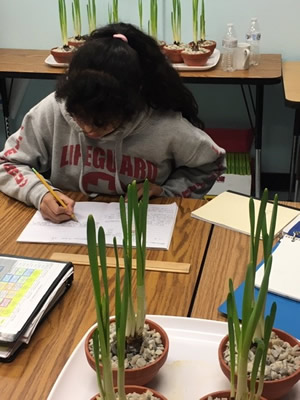
Figure 1. A student makes written observations of
her plant and the plants of her classmates.
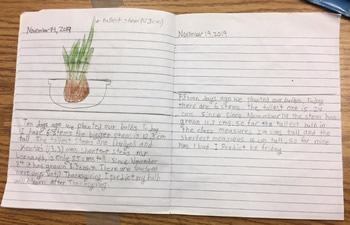
Figure 2. Student journal pages, complete with a
sketch of his bulb.
(Click here to enlarge)
In Fall
2020, consider doing something similar. This type of activity is easily
differentiated, adapted to the grade level, level of English proficiency,
content the students are or will be learning, and the interests of the
students. You can start the project off at school if
possible and have the students take their plants home in anticipation of hybrid
or distance learning. And if you begin the year with remote learning, then you
can send the materials to the students’ homes in advance. Here are some tips
for this project:
-
Establish a weekly journal
in the form of a Google document for each student. Journals can include weekly
sketches, measurements, and predictions. Students can make graphs and calculate
the mean, median, mode, and range from your combined data, all while
learning/focusing on the language of math as well as science.
-
Within the first face-to
face hours together, set this up with your students (or set things up
remotely).
-
Weekly, provide writing
prompts so students can write and you can provide feedback.
Fostering
Communication
To foster a
home/school connection, I plan to begin regular communication with parents
and/or guardians early on in the year. This spring, with COVID -19 looming, I
began to call families once a week to check in as well as to convey messages
from the school. I was able to speak with the children as well, for some
additional one-on-one speaking and listening practice. Parents shared that they
looked forward to my calls, and some asked that I continue during the summer.
In Fall
2020, each school community will have to establish norms and protocols for
communication based on their district and state guidelines. This will more than
likely include virtual means (electronic computer-based as well as phone-based
correspondence). Digital literacy skills for the entire community will need to
be improved upon as well so that we can be ready for full distance learning at
any time.
This past
spring, while the move from face-to-face learning was challenging for many
reasons, I hope you were able to build upon the relationships that had been
established face-to-face throughout the year. Hopefully, we can take the
lessons learned from Spring 2020 and apply those lessons to Fall
2020.
Final
Thoughts
The
transition to distance learning, though sudden, wasn’t all bad. One unforeseen
advantage to remote learning that surprised me was that students engaged in
distance learning could be grouped in new ways that better met their needs.
Another unforeseen advantage was that several students with whom I work who
have special education plans actually were able to do their work better because
of the distance learning format. Moving from class to class and changing
subject areas every 50 minutes in the school building had made it harder for
these students.
Finally, I
want to leave you with the reassurance that we are not alone in dealing with
these uncertain and blurred times. Soon, my school (and probably yours) will
announce the final grand plan for “back-to-school.” We
will find a way to rise to the occasion as we grow, learn, and stay safe as a
community.
Katherine
Lobo comes from a family of educators. She
has taught at both private and public schools in the United States as well as
in Australia and Japan. Presently, she is a full-time ESL teacher at the F. A.
Day Middle School in Newton, Massachusetts and an adjunct professor in the
Education Department at Brandeis University in Waltham, Massachusetts. Finally,
Kathy is a member of the TESOL International Association Board of
Directors. |